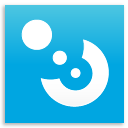Structure
Flat organization
We’re organized as a flat organization to simplify decision-making and be able to move fast.
Small teams
We optimize for small teams to have a low communication overhead and cut down on meetings to synchronize.
Small teams also allow us to keep salary costs down so our prices remain competitive. As SaaS we compete on a global scale where such efficiency is required.
The core of a SaaS are the software developers with the domain knowledge. To be efficient need less our developers are mostly full stack. This way we can keep the team small and reduce communication between frontend and backend teams that we’d have otherwise.
Verticals
We started out organizing a team horizontally. That usually meant our full stack developers also needed to know about infra, DevOps, security and user support. As SaaS grew, that’s stretching people too thin. Therefore, in 2024 we started specializations.
Company Roles
d-centralize uses Roles for work distribution. A single Role can be anything from a simple office chore to an employee’s status in a certain development project.
There are many small tasks in running a company. Usually people dedicate 90%-95% time to their main Role, which is usually their development project, but it’s expected to distribute all smaller jobs across employees too. Even though some of these Roles are optional, taking part in them benefits everyone in the company.
All interaction with the Role system is now done through our bot @dcbot on Mattermost.
